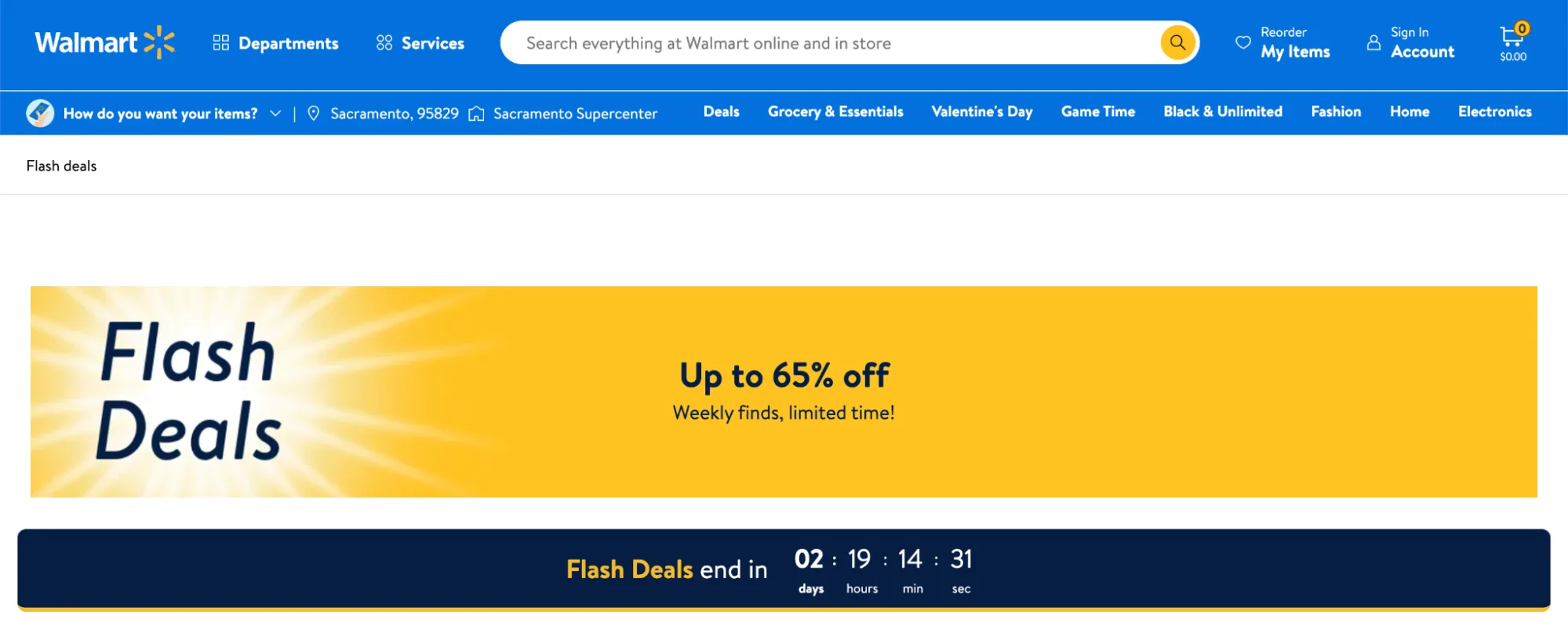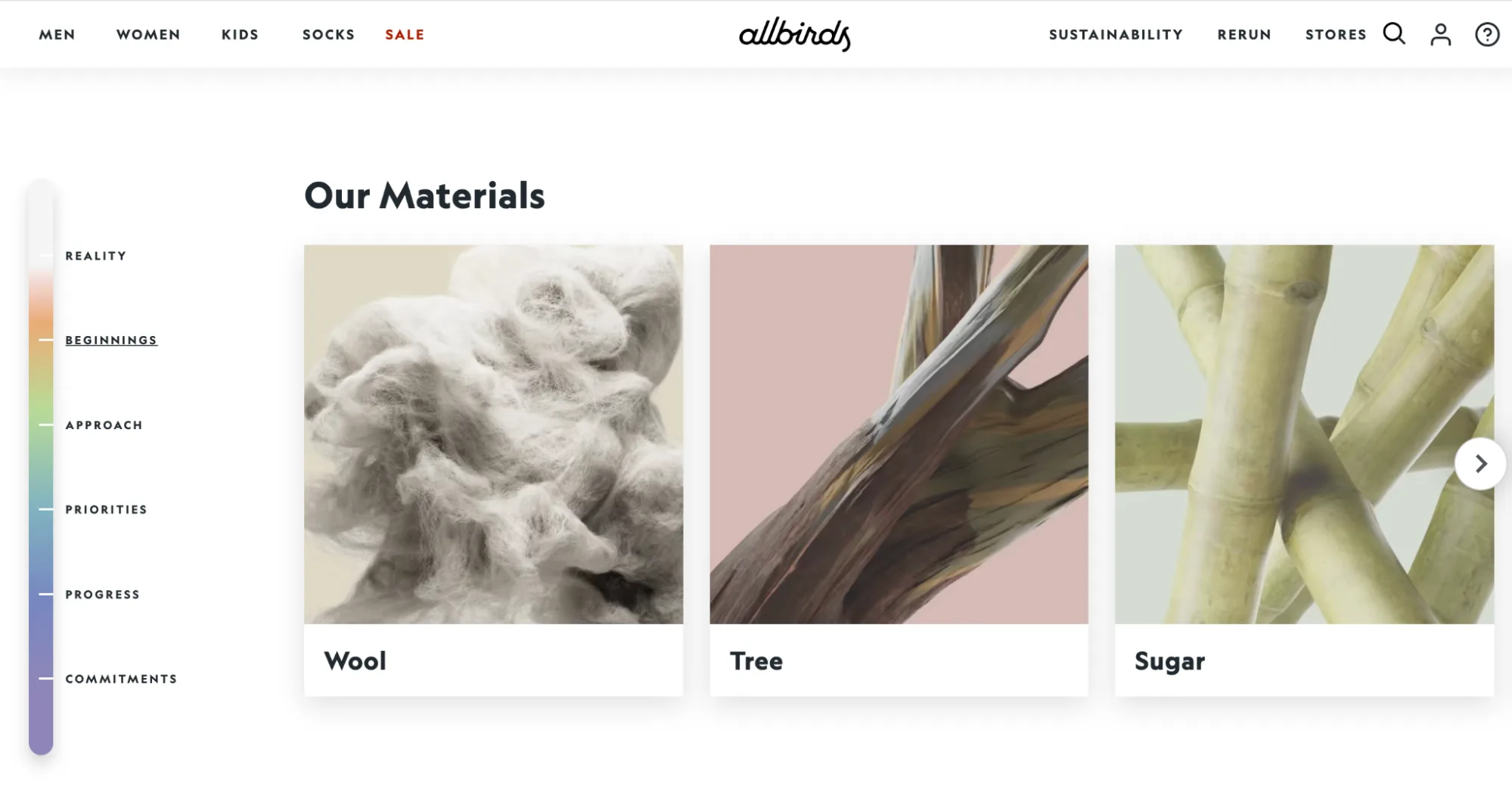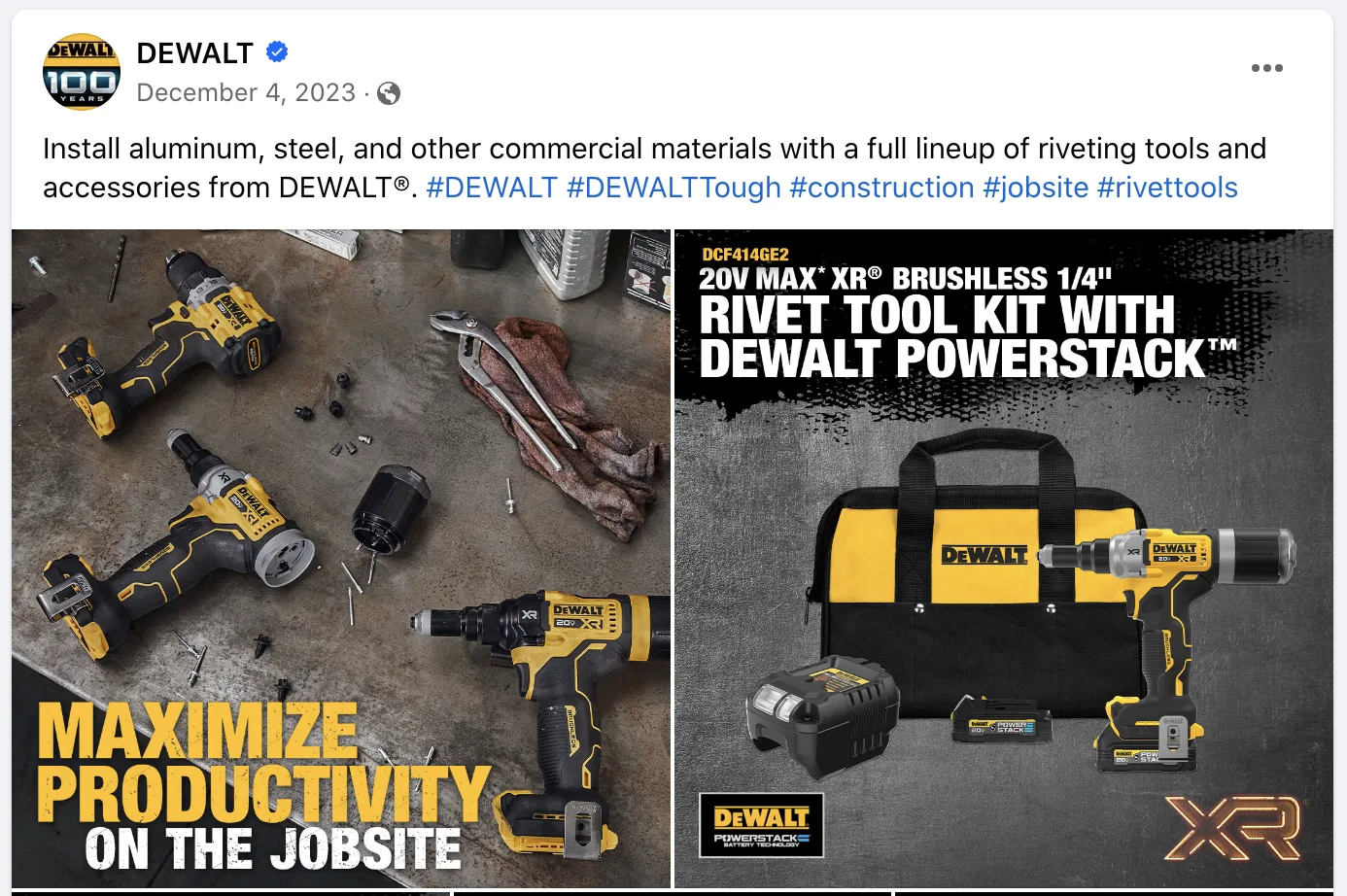Enterprise-level brand advertising: 5 strategies & examples

Big brands don’t just advertise—they tell stories on a grand scale. Enterprise-level brand advertising is how these stories reach the target audience, shape their perceptions, and drive decisions.
With massive audiences, multifaceted organizations, and millions on the line, every advertising move must be measured and meaningful.
But the challenges of reaching the right customers with the right message only grow as the operation expands. So how can sprawling enterprises master brand advertising that drives measurable impact across the board?
The answer lies in rigorous data, customer insights, and continuously optimized campaigns fine-tuned to move different personas along the customer journey.
Read on as we explore proven enterprise marketing strategies to help your business boost awareness and engagement at scale. Whether you need to coordinate complex organizational structures, demonstrate concrete ROI, or adapt to emerging technologies, these techniques will position your enterprise for sustainable growth in the modern marketplace.
What is enterprise-level brand advertising?
Enterprise-level brand advertising refers to promotional campaigns focused on shaping the audience’s perception of the brand as a whole—beyond just specific products. For big B2B and B2C enterprises, brand advertising is a strategic play for long-term growth and customer loyalty.
How is enterprise-level brand advertising different from other advertising?
Unlike small business campaigns focused solely on local communities, enterprise brands need to appeal to audiences on a national scale. This requires solid strategies from your enterprise marketing team—with a real handle on diverse markets and cultures.
In contrast to product advertising touting features, enterprise-level brand advertising aims to build positive associations, increase awareness, and establish trust. Enterprise marketing campaigns tap into emotions and values that resonate in customers’ minds, giving the brand meaning. Plus, enterprise branding brings together all the marketing channels under a common structure to emphasize a unified message.
In essence, enterprise branding demands sophisticated approaches to navigate complex sales cycles and carve out a unique identity among competitors.
Why does brand advertising matter for the success of enterprises?

In today’s hyper-competitive, always-online world, brand reputation is more valuable than ever. Customer reviews, opinions, and experiences spread fast online—and most importantly, can shape how your target customers view your brand and even impact your ROI. With compelling, consistent messaging, you can influence how people describe and view your enterprise.
Here are more ways enterprise-level brand advertising can help you achieve widespread visibility and drive consistent sales.
Facilitates long-term growth
The rewards of solid brand advertising can build over months and years. While direct sales may not spike right away, brand affinity compounds.
By consistently improving brand favorability, a strategic enterprise marketing program can make people more likely to buy and recommend the brand. It reduces churn by enhancing customer satisfaction and loyalty.
When done right, your brand advertising becomes an asset that can pay dividends across the customer journey.
Reaches wider audience segments
Enterprise-level brand advertising also expands the reach of audiences with new demographics by creating awareness.
Marketing campaigns designed to resonate with different age groups, cultures, or lifestyles can attract consumer segments not yet familiar with the brand. By proactively reaching out to new target audiences, you can help future-proof your brand’s relevance and pave the way for sustainable success.
For example, when legacy brands want to appeal to younger generations, brands can evolve messaging and creatives to align more with the present values and preferences.
A great example of this is when Levi’s evolved their messaging through a “Buy Better, Wear Longer” campaign to appeal to younger generations and people preferring sustainable products. This campaign focuses on quality and sustainability over fast fashion, aligning with modern values of environmentalism that help build brand affinity among younger eco-conscious customers.
Similarly, you can make inroads with your diverse populations poised to drive future growth with a strategic enterprise marketing campaign.
Overcoming reputation issues
Brand advertising gives enterprises the power to respond to reputation problems or misconceptions. By spotlighting positive attributes and showcasing core values, you can redirect focus away from negative perceptions.
A strong, consistent brand identity brings credibility, gravitas, and strong recognition with a competitive edge. Even with setbacks, companies with resilient brand images can bounce back through smart advertising plays.
Enterprise brand marketing strategies: 5 ways to boost brand awareness
With the right mix of awareness-driving strategy backed by data and continuous testing, enterprises can increase brand visibility at a massive scale. Here are some popular marketing strategies for enterprise companies to build brand awareness and positioning.
1. Cost leadership strategy: Maintain a low cost structure
The cost leadership strategy is all about keeping prices affordable for buyers. Enterprise businesses do this by cutting expenses wherever they can—like streamlining operations, maximizing efficiency, procuring in bulk, etc.
For advertisers, this means emphasizing value and savings in messaging—like deals, sales, and affordability.
Here are a few ways you can leverage this strategy in your enterprise-level brand advertising:
- Quantify savings upfront: Use messaging like “Save up to 30% on everyday items.” Seeing specific dollar or percentage amounts catches viewers’ attention.
- Showcase low pricing prominently: Consider a “Low Prices—Guaranteed” tagline and callouts like “Starting at just $19.99.”
- Promote limited-time deals and sales: Time-sensitive offers create urgency while still reinforcing the low-price message.
- Partner with deal-centric influencers and communities: Tap into audiences already focused on savings and bargains.
- Run price-focused multichannel campaigns around major shopping events: Consider how to capitalize on major events like Black Friday. Omnichannel promotions maximize reach.
- Use comparisons to demonstrate specific examples of savings: For instance, “With us, this project only cost $5,000 compared to $10,000 elsewhere.”
In a nutshell, you tie your lower-cost position directly to benefit statements for the customer. Price-sensitive shoppers will respond to messaging centered on deals.
Take Walmart, for example. Their advertising has long centered on low prices and everyday discounts through slogans like “Save money. Live better.” It regularly touts promotions focused on their cost-effective, discounted products. Walmart has been able to build a reputation as the go-to destination for value shoppers.

When done right, a cost leadership strategy can significantly boost brand awareness among price-conscious audiences. By consistently highlighting competitive pricing, special offers, and the clear benefits of savings, you show value and build trust with customers.
2. Product differentiation strategy: Bring something new to the table
A product differentiation strategy is all about offering something innovative, unique, or superior to set yourself apart from competitors—like any proprietary tech, rare ingredients, or capabilities only you have.
For instance, a high-end fashion brand can use its premium textiles as the center of its branding; a printing company can promote its 12-hour delivery service; or a tech company can highlight its patented hardware.
Take the example of Allbirds, the footwear company that uses merino wool and sugarcane in their shoes—setting them apart from typical leather/rubber options. Their ads consistently highlight their sustainable materials that are ultra-comfortable. Their sharp focus on material innovation through the brand story and partnerships is a strong model for product differentiation—which is quite evident from their landing pages to their social media strategy.

To implement such a smart digital marketing strategy, look for something that conveys why your offering rises above the competition and provides something truly unique. And then flaunt it. Use bold graphics and premium branding that align with your positioning to call out signature features across all your marketing initiatives—from your event-specific content marketing efforts to the standard email marketing and social media marketing campaigns.
Ensure consistent messaging across every stage of your content creation process to make that feature synonymous with your brand.
3. Focus/niche strategy: Own your niche
The focus strategy gets hyper-specific, concentrating on meeting the needs of one narrow niche. You tune your whole business to serve that niche better than anyone else can.
A great example is DeWalt, which dominates power tools for construction pros by intimately understanding contractor needs and marketing directly to their interests on job sites and through trade publications. Their authority in the niche is unmatched.

Owning a niche, like DeWalt, requires laser targeting the right audience and addressing their distinct needs better than any competitor. You can do this by featuring visuals that resonate with your audience and help them visualize your products or services in their world. You should also buy ads on the platforms your potential customers actively use. You need to prove that you live and breathe your niche—that you understand them and their needs so well that there’s simply no better fit.
Use marketing automation tools like a customer relationship management (CRM) platform to gather customer data so you can create customized interactions and offerings to new customers through different touchpoints. When you combine data from such marketing tools with human interactions, you can create long-lasting impressions with your customers.
4. Customer intimacy strategy: Build lasting, loyal relationships
The customer intimacy strategy is all about keeping clients loyal for the long haul. Large organizations can do this by building personalized relationships that fully understand the audience’s unique needs, values, and pain points.
This strategy begins with collecting detailed customer data and feedback and behavioral data at every touchpoint. This means conducting in-depth interviews and focus groups, monitoring social media interactions, and analyzing purchase history to assemble a comprehensive view of each customer segment.
Based on the insights, you can customize offerings to match the specific desires of each segment, such as offering specialty features, personalized pricing, differentiated service levels, etc. This strategy works well for targeted lead generation in account-based marketing efforts, allowing you to deliver a thoughtful experience for the high-value leads.
The customer intimacy approach prioritizes long-term loyalty over acquisition. By going the extra mile to understand and meet unique needs, enterprise-level companies earn trust and repeat business.
5. Experience-centric strategy: Make an emotional connection
The experience-centric model involves designing and delivering memorable, meaningful experiences that emotionally connect customers to a brand. Rather than focusing solely on product features or price, brands can build engagement through a carefully crafted end-to-end customer experience that taps into customers’ aspirations, emotions, and relationships to drive loyalty beyond convenience or cost through a multi-channel marketing program.
This strategy requires orchestrating all brand touchpoints—retail environments, service interactions, digital engagement, and branded events—to tell a cohesive story with a uniform brand voice that resonates with the customer base on a more meaningful level.
One of the best demonstrations of the experience-centric strategy is Casper. Casper revolutionized the mattress-buying experience with the “mattress in a box” concept. Customers can simply order mattresses online and have them delivered in a single box.
They even encouraged customers to share their unboxing videos of the Casper mattress, which helped to swiftly increase their popularity.
View this post on Instagram
By strategically guiding the customer journey and framing it as a sharable moment of discovery, Casper enhances the perception of their product from a boxed item into a source of happiness, further cementing their brand reputation through user-generated content.
How to build your brand with Yelp
Once you have finalized the best marketing strategy for your enterprise,you can utilize Yelp’s various advertising and analytics tools to bring it to life. You can effectively target audiences, amplify your brand message, and optimize your approach based on performance data through Yelp’s tools.
Target precision audiences
Yelp provides various options for enterprises to promote content and offers to niche segments based on rich user data and intent signals.
With Yelp Ads and Yelp Audiences, you can define your target market using precise parameters like location, demographics, interests, and past interactions. This allows you to create connections at scale while maintaining a personalized touch. It isn’t just about reaching more people; it’s about reaching the right people.
Let’s say you run an enterprise that offers plumbing services. You can use Yelp Search Ads to reach homeowners within a specific radius searching for services like “pipe repair” or “bathroom renovation”—and have your business ad displayed in key places on Yelp.com and the Yelp mobile app, such as above or below relevant search results in the “Sponsored Results” sections and on your competitors’ pages.
Additionally, you can use the Yelp Spotlight feature to promote your brand—using video or an image—on your business page and Yelp’s homepage.
Beyond this, you can use Yelp Audiences to showcase your ad outside the Yelp platform. So if a potential customer has searched for plumbing services previously, they will be targeted with Yelp’s off-platform ads when they’re watching a home improvement show or browsing a DIY blog—reminding them that professional help is just a call away.
This was exactly how Yelp Audiences helped Visa improve its brand awareness and customer sentiment by 12% among small businesses and shoppers through targeted advertising. This significant improvement highlights the potential for enhanced ROI and customer loyalty through strategic ad placement.
Optimize with analytics
As you run your advertising strategies, you need analytics to tie all these marketing efforts together and help you continually optimize them.
You can utilize Yelp Pixel to gain detailed insights into audience response across different channels following ad exposure. These key performance indicators (KPIs) provide valuable data on creative elements and targeting strategies that drive engagement and conversions, helping with your optimization of the campaign performance over time.
Referring back to the plumbing services example, you can use the KPIs from Yelp Pixel to gauge the response across different channels and refine your approach—perhaps focusing more on emergency services or highlighting specialized plumbing solutions.
Apart from this, you can measure the impact of the advertisements on crucial brand health metrics—such as product awareness or consideration—with Brand Lift studies. For example, after running a campaign on the importance of professional pipe maintenance, you could use these studies to assess service inquiries.
Yelp Store Visits is another powerful tool that can connect online advertising efforts to in-store foot traffic. For example, an enterprise offering spa services can monitor how their enquiry calls translate to store visits. Or a shoe store can see how many people who viewed their Yelp ads visited their retail location afterward.
By analyzing this data, you can get a 360-degree picture of the advertising ROI, right from the point of contact to the offline conversion.
One of the largest national bowling chains, Bowlero, leveraged Yelp Store Visits to gauge campaign returns. “The Yelp Store Visits report has provided much insight into what we’re getting for the return on our investment. It helped us measure how many people either saw or interacted with one of our ads and then were actually driven to our center,” said Megan Wintersteen, former director of digital at Bowlero.
By monitoring foot traffic after ad interactions, Bowlero saw double-digit ROI increases.
The path ahead: Boost awareness and trust through brand advertising
Establishing a consistent narrative with a clean brand message woven across all touchpoints can help cement your position in your niche.
With a flexible, forward-looking approach, you can align your advertising strategies with the evolving needs of your customers.
Make sure to focus on data-driven campaigns that shape audience perceptions across diverse demographics. Optimize based on rigorous testing to boost customer loyalty. Take an agile approach to coordinate messaging across channels and touchpoints. With the right strategy in place, you can connect with customers in memorable and meaningful ways at scale—and form lasting impressions.
Reach out to Yelp for Brands today to discuss your advertising strategy.